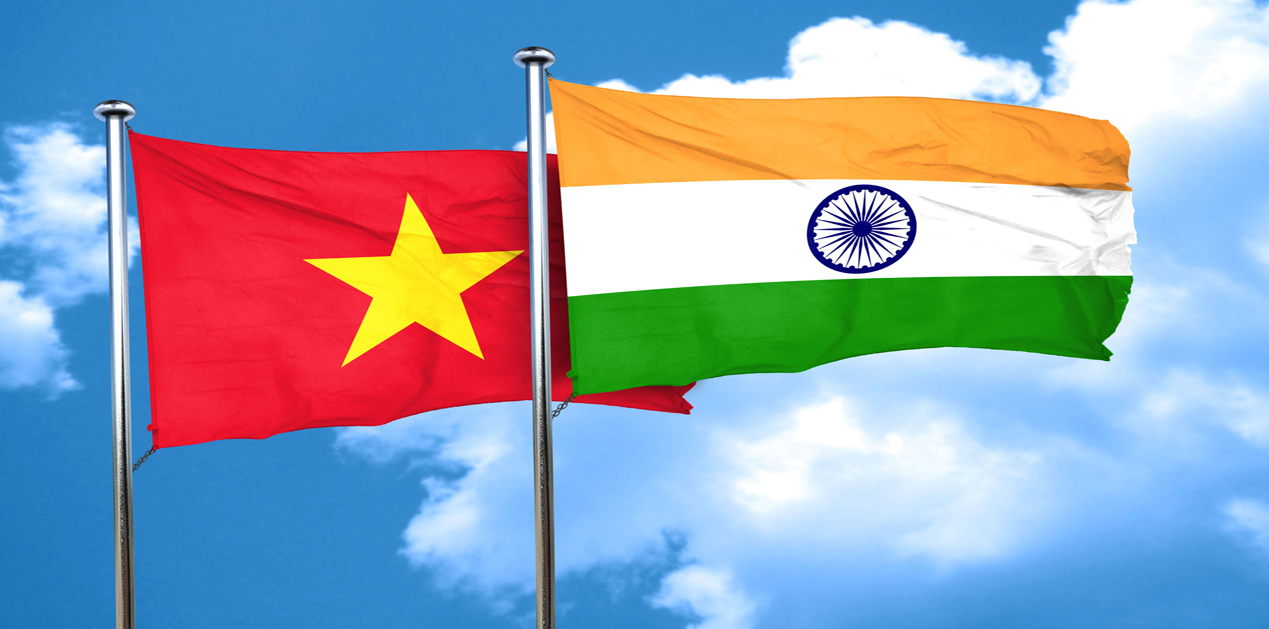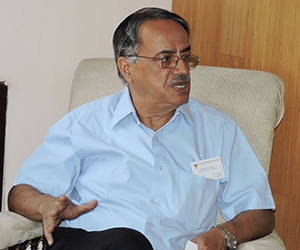Within a short period of less than two months there would have been two high level political leaders from Vietnam visiting India. Last month Prime Minister Nguyen Xuan Phuc was in New Delhi as part of the India-ASEAN Commemorative Summit as also to witness the Republic Day Celebrations as one of the chief guests. In beginning of March, President Tran Dai Quang of Vietnam will be in India to build on the cooperative framework that exists between the two countries. President Quang’s visit soon after his PM’s visit indicates the significance and desire of both sides to strengthen their ties in a vast variety of fields besides political, security and economic spheres.
The evolving relationship is also underpinned by the fact that Vietnam remains a key enabler for India to pursue its mutually beneficial policies with the ASEAN members as also to further its strategic interests in the region including the South China Sea. Shared common interests and security perceptions in the emerging strategic dynamics of the Asia-Pacific propel both the countries to enhance and strengthen their strategic ties.
Earlier in September 2016, during PM Modi’s visit to Vietnam, both sides had formally upgraded their relationship to ‘Comprehensive Strategic Partnership’ from the existing ‘Strategic Partnership’ that had been in vogue for a decade. The upgraded partnership has been designed not only to expand areas of cooperation but also to provide a new direction, momentum and substance to the existing areas of bilateral cooperation. Thus, the current year marks the completion of one year of Comprehensive Strategic Partnership and President Quang’s visit would be a good opportunity to reassess the progress made and inadequacies experienced. Both India and Vietnam have been on an upward economic growth trajectory and have been supporting a rule-based order in the region. Thus, defence and security cooperation has become an important element of the evolving strategic relationship.
President Quang during his visit in March is likely to place emphasis on political, defence and security and economic cooperation. PM Modi’s administration after taking over in May 2014 has paid particular attention in reinvigorating relationship with Vietnam. The common efforts of both the countries are geared towards contributing to stability, security and prosperity in this region. During PM Nguyen Tan Dung to India in October 2014 PM Modi had observed that “Our defence cooperation with Vietnam is among our most important ones. India remains committed to the modernisation of Vietnam’s defence and security forces. This will include expansion of our training programme, which is already very substantial, joint-exercises and cooperation in defence equipment.” Subsequently, in May 2015 a Joint Vision Statement on defence cooperation for the period 2015-2020 was signed by the respective Defence Ministers in New Delhi.
However, the question remains as to whether after two and half years of existence of the joint defence vision for cooperation, how far has it been implemented on the ground. The Indian Armed Forces have been engaged with the capacity building of the Vietnamese Armed Forces particularly the Navy. The areas of focus have been training, repairs and maintenance support, exchanges between think tanks, study tour and ship visits. India has already been providing assistance to Vietnam’s navy through training to operate the new Russian-built submarines. India has also provided the biggest defence line of credit of US 500 million dollars so far. Earlier India had offered a $100 million line of credit for patrol boats. The $100 million line of credit is being utilised to build Offshore Patrol Vessels for Vietnam’s Coast Guard.
Vietnam has been steadily increasing its efforts to have a credible defence sector – mostly as deterrence against China’s rise and its aggressive moves in the South China Sea. India, with its increasing indigenous capabilities in defence production should explore all the avenues to support development of defence industry in Vietnam. India should consider for export to Vietnam a variety of missile systems (including various versions of Brahmos Cruise missile), besides Unmanned Aerial Vehicles (UAV) and other defence systems and weapons as earmarked by India for export. Dornier surveillance aircrafts, mini-UAVs, upgraded T-72 tanks and indigenously manufactured artillery equipment, depending on Vietnam’s requirements could also find place on the export list. Further, sharing of intelligence would add to intensification of strategic relationship. India should also explore the possibilities of supporting the Vietnam forces in establishing and development of its C4ISR (Command, Control, Command, Computers, Intelligence, Surveillance, Reconnaissance) systems.
In so far as trade and commerce is concerned, the bilateral trade for 2016-17 was 10.1 billion USD. And for the first half of current year it was 6.1 billion USD, therefore for the full year it could be around 12 billion USD. Thus, the target set for bilateral trade of 15 billion USD by 2020 would be achieved. On the hand it can also be said that the target is not ambitious enough as Vietnam has much large trade with countries like China and US. Exploring new avenues for trade, increasing the limited investment by India in Vietnam and improving connectivity especially for tourism purposes would add to strengthening the economic ties.
Vietnam has been described as a key pillar of India’s Act East Policy by PM Modi and other Indian leaders. Vietnam has been in the forefront supporting the objectives of this policy. Whether it is the Ganga-Mekong Initiative or other multilateral projects, Hanoi has taken substantive steps towards realisation of the same. Both sides have been coordinating their foreign and security policy approaches at the various multilateral forums and especially so in ASEAN, ARF (ASEAN Regional Forum), East Asian Security Summit and ASEAN Defence Ministers Meeting Plus. Vietnam has also been supporting India’s efforts of strengthening its ties with the ASEAN as a country coordinator for India for the period 2015 to 2018.
India needs to be proactive and should be more liberal in granting concessions in trade and commerce, widen areas of mutual defence and security cooperation as also impart momentum to cultural cooperation. Direct air flights which should have come about over a year ago have still not fructified. Many such proposals and schemes have been languishing for want of effective implementation. Thus, the coming visit of President Quang should not be only used for making declarations but also for giving concrete shape to existing plans and projects.
(Views expressed are of the author and do not necessarily reflect the views of the VIF)
Image Source: http://www.indiaglobalbusiness.indiaincorporated.com/india-vietnam-pushing-dragon/











Post new comment